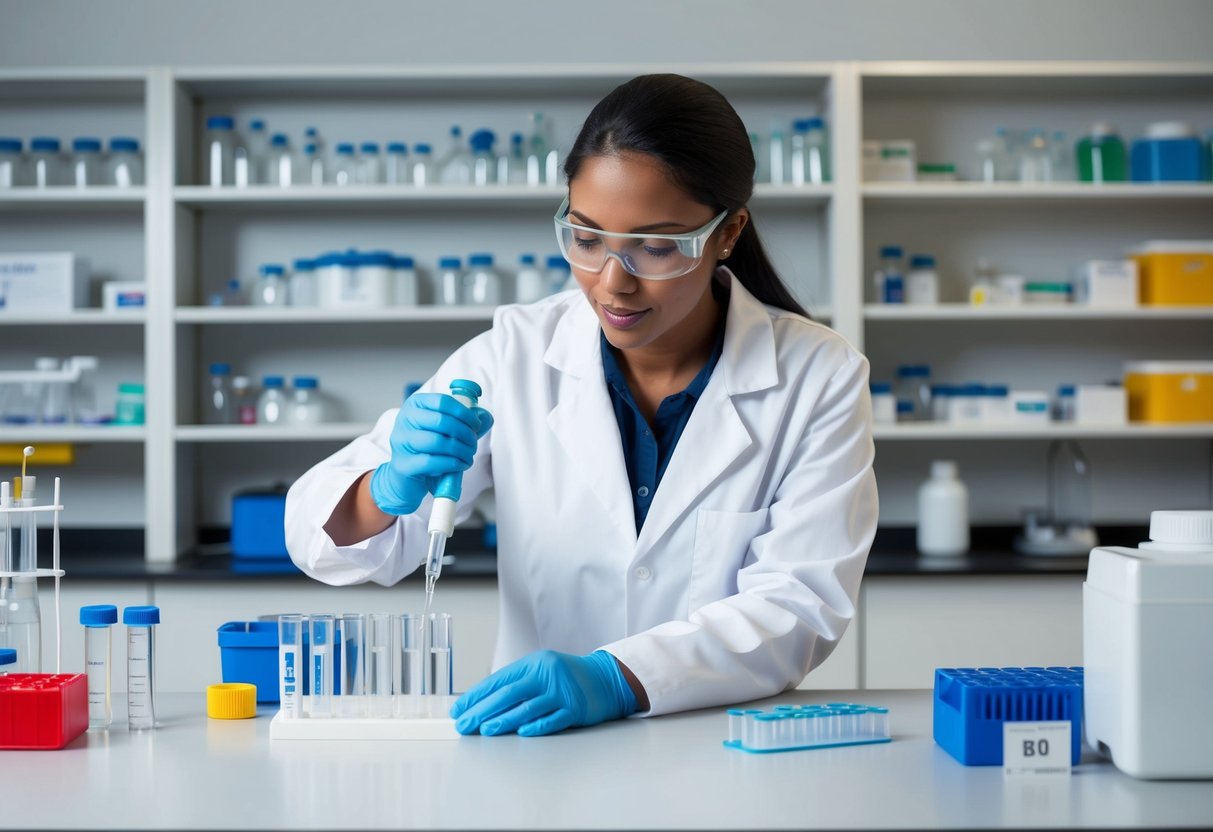The Process of Getting a Drug Approved
Navigating the world of drug approval can seem daunting, but with a clear understanding of the process, it becomes manageable. When a pharmaceutical company discovers a potential new medication, the path to getting it approved involves several key steps that ensure the drug’s safety and efficacy. This rigorous process is crucial for bringing safe and effective treatments to the market.

Drug development begins with extensive research in the laboratory, followed by preclinical studies. These initial steps are necessary to identify promising drug candidates. Once a drug shows potential, it moves into clinical trials, which test the drug’s safety and effectiveness on humans. This stage is divided into phases, each with a specific purpose, ranging from testing safety to verifying how well the drug works.
After successful clinical trials, the drug undergoes a comprehensive regulatory review. Agencies such as the FDA examine the data to decide whether the drug should be approved for public use. Each step in this process plays a vital role in ensuring that only the best treatments are made available to patients in need.
Key Takeaways
- The drug approval process starts with research and preclinical studies.
- Clinical trials assess safety and effectiveness through multiple phases.
- Regulatory review determines if a drug is safe for public use.
Drug Development and Preclinical Studies
Before a drug can reach the market, it goes through a complex process involving discovery and preclinical evaluations. This involves identifying potential targets and conducting initial tests to ensure safety and effectiveness.
Discovery and Target Identification
Discovery begins in laboratories where scientists analyze numerous chemical compounds. They aim to find drugs that interact precisely with biological targets, such as proteins or genes. This requires a deep understanding of disease mechanisms to identify promising drug candidates.
Advanced technologies like computational models and high-throughput screening are used during this stage. These tools can rapidly evaluate thousands of compounds for activity against selected targets. Scientists prioritize compounds showing good results for further investigation. This reduces the time and cost involved in the drug development process.
Preclinical Testing and Animal Studies
In preclinical testing, drug candidates undergo rigorous evaluation to assess safety and biological effects. Studies involve cell-based tests followed by animal studies. These tests are crucial to understanding how the drug behaves in a living organism and identifying potential toxicities.
Animal studies are an important part of preclinical research. Laboratory animals help in assessing the drug’s pharmacokinetics, which includes how the drug is absorbed, distributed, metabolized, and excreted. Success in these studies supports moving the drug into human clinical trials, providing the foundation for future research phases and enhancing the likelihood of achieving regulatory approval.
Clinical Trials Overview
Clinical trials are an essential part of the drug approval process. They are conducted in phases to assess the safety, dosage, efficacy, and potential adverse effects of a new drug before it can be marketed to the public.
Phase I: Safety and Dosage
Phase I trials focus on determining a drug’s safety and appropriate dosage levels. They generally involve a small group of 20 to 80 healthy volunteers. These participants help researchers assess how the drug is absorbed, metabolized, and excreted from the body.
The primary goal is to identify any side effects and understand how the drug interacts with the human body. Testing during this stage usually lasts several months. These studies are crucial for establishing a safe dosage range and identifying possible adverse effects early.
Phase II: Efficacy and Adverse Effects
In Phase II, the primary focus shifts from safety to efficacy, although safety continues to be monitored. This phase involves a larger group of participants, typically numbering in the hundreds, who have the condition the drug is intended to treat.
Researchers aim to determine whether the drug is effective at treating the condition. They also closely monitor any adverse effects. These trials are often placebo-controlled, meaning some participants receive the drug while others receive an inactive substance. This helps to ensure that any observed effects are due to the drug itself.
Phase III: Efficacy and Monitoring of Adverse Reactions
Phase III trials involve an even larger group of participants, often in the thousands, and last longer than previous phases. This stage aims to confirm the drug’s efficacy and further evaluate its safety profile by monitoring adverse reactions over a longer period.
This phase often compares the new drug to existing treatments, providing deeper insights into its overall benefits and risks. The data collected are critical for the creation of detailed drug labeling, which informs doctors and patients about proper use and potential side effects. Successful completion of this phase is essential before a drug can proceed to the FDA approval process.
Regulatory Review and Approval
Getting a drug approved involves a meticulous evaluation process. Key stages include submitting a New Drug Application (NDA), undergoing the FDA review, and ensuring safety through post-approval monitoring and Phase IV trials.
New Drug Application (NDA) Submission
The NDA is a comprehensive document submitted by pharmaceutical companies to the FDA. It includes all data from drug trials, proposed labeling, and details of manufacturing processes. This document also has information about the drug’s ingredients and how it is produced. The NDA aims to demonstrate that the drug is safe and effective for its intended use.
Before approval, the NDA must clearly present study results and highlight any potential benefits over existing treatments. A well-prepared NDA increases the likelihood of a faster review process. Proper documentation and a thorough presentation of data are crucial.
Food and Drug Administration (FDA) Review Process
Once the NDA is submitted, the FDA begins a detailed review process. The FDA’s team of medical doctors, chemists, and other scientists evaluate both the clinical trial data and the manufacturing information. They determine whether the drug is safe and effective for its intended use and if the benefits outweigh any potential risks.
Special attention is given to the drug’s side effects, safety profile, and potential interactions with other medications. If the drug meets all required standards, it may receive FDA approval. During this review, the FDA may also request additional studies or information before reaching a decision.
Post-Approval Monitoring and Phase IV Trials
After a drug is approved, monitoring continues through post-marketing surveillance and Phase IV trials. These trials aim to gather data on the drug’s long-term safety and effectiveness. New information may emerge about side effects, interactions, or different uses for the drug.
Regulatory agencies encourage the reporting of adverse effects to ensure ongoing safety. If significant concerns arise, the FDA can withdraw a drug from the market. This phase is crucial for understanding the drug’s impact in a broader population and ensuring public health safety.
Frequently Asked Questions
The FDA drug approval process involves several steps and phases to ensure new medications are safe and effective. Understanding these stages helps clarify the journey from research to market.
What are the steps involved in the FDA drug approval process?
The process begins with laboratory research, followed by preclinical studies on animals. After these steps, a company submits an Investigational New Drug (IND) application to the FDA. If approved, the drug then enters clinical trials in human subjects.
How long does the FDA drug approval process typically take?
The duration varies but can take several years. Cancer drugs, for example, may require six to twelve years for approval, depending on the complexity and results of trials.
Can you outline the four phases of the FDA drug approval process?
During Phase 1, safety and dosage are tested with 20 to 80 volunteers. Phase 2 assesses effectiveness and side effects. Phase 3 involves larger groups to confirm results and Phase 4 includes post-marketing studies to further monitor safety.
What is required to obtain FDA approval for a new medication?
A New Drug Application (NDA) must be submitted, detailing the drug’s journey through clinical trials, its safety profile, and effectiveness. The document must also include the drug’s ingredients and potential side effects to ensure comprehensive evaluation.
What does the FDA review process entail for drug development?
The FDA review involves a thorough assessment of the NDA, where experts evaluate trial data, possible risks, and benefits. This process ensures that only drugs with a favorable safety profile and proven effectiveness reach the market.
Conclusion
The drug approval process is complex and involves several key stages: discovery, preclinical testing, and clinical trials. Each step ensures the drug’s safety and effectiveness. The process is costly and time-consuming, often taking over 15 years and $2 billion. Despite these challenges, it safeguards public health by thoroughly evaluating drugs. Collaboration between researchers and regulatory bodies, such as the FDA, is crucial to making informed decisions and advancing new therapies that improve health outcomes.









